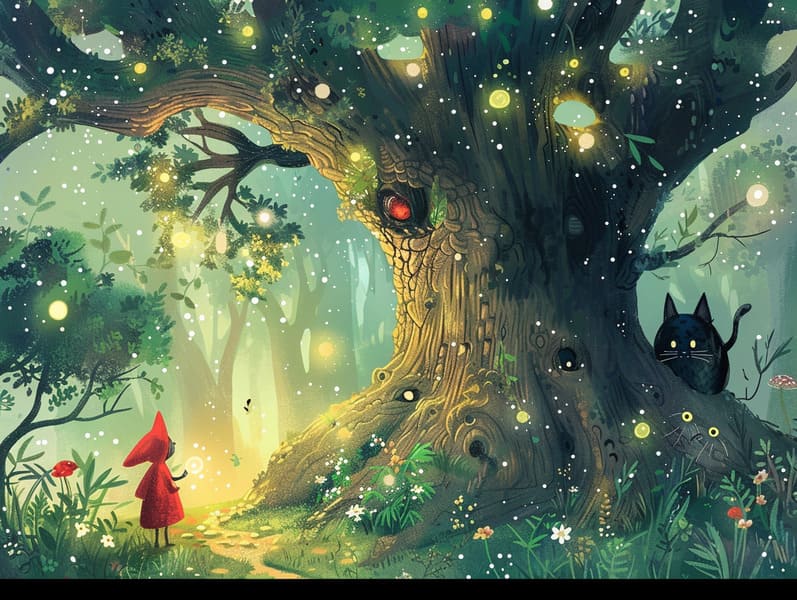The Formation of Fairy Tales to Read with the Consistent Attraction.
The Formation of Fairy Tales to Read with the Consistent Attraction.
Blog Article

Old fairy tales have ancient roots. These narratives have been relayed from one generation to the next well before they were ever inscribed. They came from a variety of traditions, including African traditions. They were initially transmitted among mature audiences, often carrying themes and messages pertaining to the societal norms and beliefs of the time.
The renowned Brothers Grimm, the two Grimm brothers, were among the first to collect many of these beloved stories. Their published works, "Grimm's Fairy Tales," included stories like "The Little Glass Slipper," "Hansel and Grethel," and "Snow-White and Rose-Red," which have since become pillars in the world of famous fairy tales. Similarly, the Danish author's charming stories, such as "The Little Mermaid," and "The Duckling's Story," have stolen hearts worldwide, solidifying their place in the pantheon of iconic fairy tales.
Despite their age, fairy tales remain as applicable as ever, especially as nighttime stories for kids. These magical stories are now available in diverse formats, including beautifully illustrated books, delightful animations, and internet fairy tales.
Their continued relevance can be linked to several magical reasons:
Important Morals: Timeless fairy tales often convey important moral lessons. Narratives like "The Boy Who Cried Wolf" teach the importance of integrity, while "The Hare and the Tortoise" show the qualities of steadfastness and humbleness. These tales offer young readers clear distinctions between correct and incorrect, shaping their moral compass in a soft yet meaningful way.
Warmth and Understanding: Fairy tales frequently involve individuals facing difficulties and adversities, inciting children to connect with their struggles and champion their triumphs. For instance, "Beauty and Her Beast" emphasizes the importance of looking deeper to see the inner core of a character, developing compassion and discernment.
Cultural Insights: Many timeless fairy tales are deeply embedded in the cultural contexts from which they came. Reading these tales can provide illuminating insights into different beliefs, developing a sense of cultural respect and respect.
Inventiveness and Fantasy: The extraordinary elements in ancient fairy tales—enchanted forests—fire up children’s imaginative ideas. These tales take readers to enchanted realms, enhancing fantasy dreams and a sense of astonishment that persists a lifetime.
Old fairy tales are not only whimsical but also teaching. They function as alluring tools in enhancing various mental and emotional abilities in young readers. When traditional fairy tales are spoken, they cultivate linguistic abilities by bringing new vocabulary and complicated sentence structures. This practice also promotes hearing perception and attentiveness, as little ones listen intently, prepared to see what happens next.
Furthermore, contemplating the themes and characters of fairy tales can advance thinking skills and cognitive skills. The young are educated to see patterns, foresee events, and comprehend cause and effect. check it out These analyses also ease little ones say their thoughts and feelings, nurturing their emotional intelligence.
In today’s information age, the availability of digital storybooks has made these stories more reachable than ever. Web-based platforms and applications offer wide arrays of timeless fairy tales that can be accessed or listened to anytime, anywhere. Fairy tales spoken are particularly widespread, extending an entertaining method for little ones to savor these captivating stories. Voice books and read-to-me videos bring characters and settings to life, often complemented by bewitching musical scores and songs that amplify the story adventure.
The timeless charm of traditional fairy tales lies in their ability to change to the present while keeping hold of their main lessons. Contemporary modernizations of these stories often present more different protagonists and modern settings, making them familiar to today’s audience. However, the main ideas of fortitude, sympathy, and equity remain unchanged, continuing to impact readers of all ages.
Traditional fairy tales also offer a sense of ease and knowability. They impart upon a orderly narrative with a definite beginning, middle, and end, often wrapping up with the conclusion of conflicts and the triumph of good over evil. This foreseeability can be comforting for the young, delivering a sense of dependability in an unpredictable world.
Old fairy tales continue to mesmerize and instruct new generations, maintaining their majesty and importance in modern society. As bedtime stories for kids, they grant access to a perfect blend of charm and understanding, supporting moral values, empathy, and creativity. The proliferation of web-based fairy tales and the favor of fairy tales read out loud guarantee that these traditional tales remain within reach to new generations.
By sustaining and making known these fairy tales, we continue to glorify the rich tapestry of mythology and cultural heritage. Whether you are delving into a gorgeously illustrated book, seeing a cyber collection, or listening via an narrated book, the grandeur of popular fairy tales is always within reach. These fairy tales emphasize of the consistent spell of stories and its ability to bring us together across eras and regions.
No matter if you are delving into a colorful picture book, perusing a web collection, or hearing an audiobook, the appeal of classic fairy tales is always within reach.
These fairy tales illustrate of the everlasting strength of fairy tales and its ability to bond us across eras and regions, establishing a link that fascinates and enlightens alike.